Yarmouth, Nova Scotia 作者: 来源: 发布时间:2021-12-07
I.Population and Area
-Area
Land: 10.57 km2 (4.08 sq mi)
-Population (2016)
Total: 6,518
Density: 616.9/km2 (1,598/sq mi)
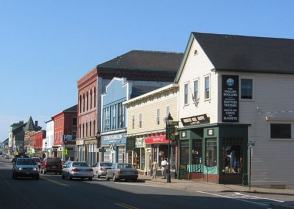
II.Natural Geography (environment and resources)
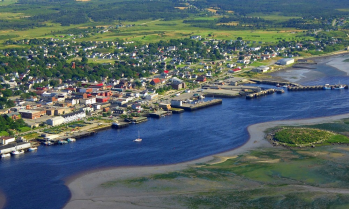
-Yarmouth is a port town located on the Bay of Fundy in southwestern Nova Scotia, Canada. Yarmouth is the shire town of Yarmouth County and is the largest population centre in the region.
-Long connected to fishing due to its proximity to Georges Bank, the town is located in the heart of the world's largest lobster fishing grounds and as a result receives Canada's largest lobster landings each year.
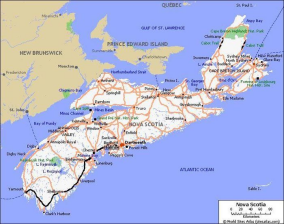
III.ECONOMY
-Average Hourly Rate in Yarmouth, Nova Scotia: C$16.64

-The average salary in Yarmouth, Nova Scotia is C$16.64. Trends in wages decreased by -100.0 percent in Q1 2020. The cost of living in Yarmouth, Nova Scotia is 100 percent higher than the national average. The most popular occupations in Yarmouth, Nova Scotia are Pharmacy Assistant, Carpenter, and Certified Coding Associate (CCA) which pay between C$12.13 and C$25.96 per year. The most popular employers in Yarmouth, Nova Scotia are Web.Com Inc. and Rexel Inc.
-Website: https://www.payscale.com/research/CA/Location=Yarmouth-Nova-Scotia/Salary
IV.Industrial Characteristics
-Although the Vikings may have visited the shores near Yarmouth around 1000 AD, the first positive evidence of a European presence in the area was Champlain’s arrival in 1604 when he names Cape Forchu and explored the harbour. It is probable that some settlement was made in the surrounding countryside by the Micmacs and Acadians but 1761 is generally regarded as the date of the founding of the town.
-It was in 1761 and the following few years that the Yarmouth area was settled by New Englanders from Massachusetts. They were enticed here by the offer of free land grants by a government which wished to populate the Nova Scotian mainland with people who would be loyal to the Crown. Essentially, they were to fill up the lands left vacant by the expelled Acadians.
-With the exception of one family which set up a mill at Cape Forchu Falls (now Milton), the early settlers made their homestead at Chebogue. As the population grew through the migration of more New Englanders, many being relatives and friends of the first settlers, settlement moved steadily northward, through Kelly’s Cove, Sand Beach to Church Hill and Yarmouth.
-Whereas the New England settlers in the Annapolis Valley turned to the soil to make a living, the rocky nature of the Yarmouth area forced local people to look elsewhere for a livelihood. The sea filled the gap - and more. It provided fish as well as a highway to transport the fish to markets. The forest at the settlers’ backs provided other trade goods in the form of lumber as well as the materials with which to build their vessels.
-Being from Massachusetts, it was only natural that the early inhabitants should trade with Boston for the manufactured goods they required. Gradually, this trade grew to include the West Indies, Saint John and Halifax. Typical cargoes were wood or salt fish to the West Indies, sugar, rum, molasses or salt fish from the West Indies to Boston or Saint John then home with manufactured goods.
-As the skills of shipbuilding, navigation and business increased, so did the size of Yarmouth’s fleet, and, as the fleet grew, so did the number of ports the ships and their Yarmouth masters visited. Yarmouth became known throughout the shipping world. Indeed, in 1879, when Yarmouth reached its peak as a ship-owning port, the town was the second largest port of registry in Canada in terms of tonnage (Saint John was the leader). This was at a time when Canada was the fourth leading maritime nation in the world (behind Great Britain, the United States, and Norway).
-The 1870’s and 80’s were times of great prosperity and growth for Yarmouth. Ambitious public buildings, such as churches and schools, were built while industries and businesses bloomed. Cultural life and recreation were not forgotten. There were literary societies, musical and theatrical groups and sports organizations. The wealth accumulated by Yarmouth’s ship-owning businessmen and seafarers is still in evidence today in the form of large elaborate houses and buildings both in the residential areas of town and along the main streets.
-The shipping industry gave rise, directly and indirectly, to a number of businesses and industries, some of which are still in operation. Included here were shipyards, boatshops, blockmaking shops and all the other segment industries of shipbuilding, chandlers and suppliers, repair facilities, shipsmiths and foundries. The foundries, which were initially established to provide cast iron fittings for ships, launched out into the production of many items including stoves and kitchen ranges. One foundry, the Burrill-Johnson Iron Co., even produced complicated marine engines, sometimes the complete vessel, and later on, shells for wartime use.
-As the sailing vessel bowed out to steamers, Yarmouth businessmen reinvested their money. A major industry was established in the Yarmouth Duck and Cotton Co. Dominion Textiles, the descendant of that company, became a mainstay of Yarmouth’s industry for many years.
-Although greatly overshadowed by the glories of the square-riggers, Yarmouth’s fishing vessels and the fishing industry itself have always formed the backbone to Yarmouth’s prosperity. Today, the industry is still of great importance.
-Another of today’s major industries, the tourist industry, began with the creation of several steamship lines which operated vessels between Yarmouth and Boston. Freight, including blueberries and fish, was carried along with passengers. With the development of the Dominion Atlantic Railway, a fast service between Halifax and Boston or New York, was established. Yarmouth acted as the changeover location and became known as the "Gateway to Nova Scotia." To cope with the increased travelling public, the Grand Hotel was established; so too were the two vacation hotels of Markland and Bayview across the harbour.
-Yarmouth contributed to the war efforts in both the Great War and World War II by supplying manpower and, during the latter, an active coastal command air base as well as training bases for army, air force and fleet air army. Today’s community has benefited from the many "wartime lads" who stayed in or returned to Yarmouth to make it their home.
-Many post-war changes have taken place including a new ferry terminal, new public wharves and modernized fish processing plants. As well, there has been a remarkable growth in institutions serving the town and environs, notably a large regional hospital, new public schools, a public library, two museums, an arts centre, and federal and provincial offices, all of which have had an impact on the economic activity and physical appearance of the town and on the lifestyles of Yarmouthians.
-The seal of Yarmouth, developed for the town’s incorporation in 1891, can sum up this capsule history. It depicts a full-rigged sailing vessel passing the Yarmouth light. Above this is the motto “Progress."
-Website: https://www.townofyarmouth.ca/a-brief-town-of-yarmouth-history.html
V.Attractions
1.Cape Forchu Lighthouse
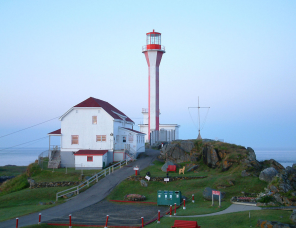
-The Cape Forchu Lighthouse is located in Cape Forchu, Nova Scotia. The lighthouse is located 11 km from Yarmouth, Nova Scotia.
-The lighthouse was constructed in 1839 and was operational in 1840. The original station was demolished in 1961 and replaced in 1962 with the "apple core" tower. Since 2000, the original Fresnel lens used at the lighthouse is located at the Yarmouth County Museum.
-The surrounding 19 acres (7.7 ha) of rocky headland contain the Leif Erikson Park, which offers a scenic walking trail with ocean views.
-On June 1, 2000 it became the first operating light station in Canadian history to be transferred to a municipality from the Department of Fisheries and Oceans, through the Department's Alternative Use Program. In exchange for the delivery of services it was transferred to the Municipality of the District of Yarmouth for one dollar. It became a registered Heritage property of the Municipality in 2001 and of the Province of Nova Scotia in 2003.
-The 19 acres of ground the lighthouse is on is open to the public year-round. The light keeper's house is a Heritage property that is open from May to September and houses The Keeper's Kitchen restaurant and a gift shop.
-In 2018, The Lighthouse, a feature film starring Willem Dafoe and Robert Pattinson, was filmed in the park.
-Address: 1856, NS-304, Yarmouth, NS B5A 4A7
-Phone: (902) 740-1680
-Website: https://www.novascotia.com/see-do/attractions/cape-forchu-lighthouse/1414
2.Yarmouth County Museum & Archives
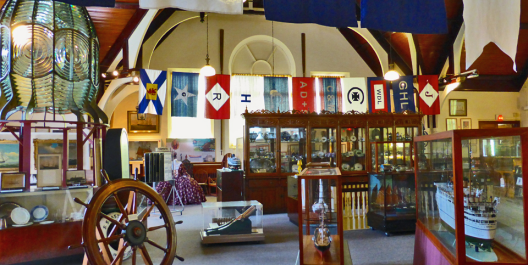
-The Yarmouth County Museum & Archives is a museum located in Yarmouth, Nova Scotia, Canada. This museum explores the history of Yarmouth County. Located in the heart of Yarmouth's heritage residential district, the museum is housed in a former church as well as two historic houses. It also operates a summer display in the restored Killam Brothers Shipping Office on the Yarmouth waterfront.
-The Museum began in 1935 with the creation of the Yarmouth County Historical Society. The society formed the Museum in 1958. It moved to its current location in 1969, the former Tabernacle Congregational Church, an 1892 granite church listed on the Canadian Register of Historic Places.
-The Museum expanded in 2000 incorporating two adjacent historic homes including the Abram Little House with a wing providing climate controlled storage and conservation facilities and an archival research centre. The Museum grounds include the Pelton-Fuller house, an 1892 Italianate summer home of Alfred C. Fuller, "the Fuller Brush Man" which was donated to the Museum by his widow in 1997 and restored by the Museum to showcase its extensive collection of Victorian furniture and costumes. The Museum has won numerous awards for exceptional museum and archival work.
-The Museum has the 3rd largest collection of marine paintings in all of Canada and the largest community archives in Nova Scotia. The original second order fresnel lens used at the Cape Forchu Lighthouse is displayed in the centre of the museum's main gallery. It was preserved by the society in 1962 when the original 1840 lighthouse was replaced by a new concrete tower. Two stagecoaches are also displayed in the museum, a locally-built example and a well-preserved Concord stagecoach, both used for service between Yarmouth and Tusket, Nova Scotia in the mid 1800s. A special display evoking the bridge of the MV Bluenose features the wheel, compass, telegraph and bell from the long-running Yarmouth ferry.
-A circular, metal plaque in the Museum collection was constructed by the Canadian Bank of Commerce in memory of its employees who served during the First World War. The plaque was found in the Home Life Building, which had formerly been the Yarmouth branch of the Bank of Commerce Building.
-The museum houses the mysterious Yarmouth Runic Stone, one of the best known items of Yarmouth's history, although its actual status as a Norse artifact is very much in dispute.
-Address: 22 Collins St, Yarmouth, NS B5A 3C8
-Phone: (902) 742-5539
-Website: https://www.yarmouthcountymuseum.ca/
3.Firefighters’ Museum
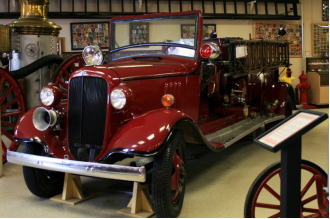
Although the Museum is temporarily closed while a new location is sought, the Canadian Fire Fighters Museum first opened its doors in 1984. Since then the Museum has evolved into a national centre for documentation, preservation, education and celebration of Canadian firefighting heritage and safety awareness. The Museum has a collection of artifacts that tell the story of the vital role that firefighters have played in the lives of communities across Canada. The Museum strives to represent all Canadian firefighters: professional or volunteer, industrial, military, wild land, and airport.
-The collection encompasses equipment of every kind, from all eras and all parts of Canada: antique fire helmets, an amazing array of fire hydrants, fire related signage, safety equipment, toys and of course our vintage fire trucks.
-Email: info@firemuseumcanada.com
-Website: http://www.firemuseumcanada.com/contact-us/
VI.History
-Originally inhabited by the Mi'kmaq, the region was known as "Keespongwitk" meaning "Lands End" due to its geographic isolation being located at the southwestern tip of the Nova Scotia peninsula.
-The region may have possibly been visited by Leif Ericson. An object known as the Yarmouth Runic Stone was found at the nearby village of Overton in 1812. It was interpreted by some to have been carved by Ericson, while others feel the markings are natural scratches gradually enhanced over the years. The stone is preserved at the Yarmouth County Museum & Archives.
-European settlement
-The region was visited in 1604 by Samuel de Champlain, who named it "Cap-Fourchu", meaning "forked or cloven cape." The first Europeans to make a settlement on these shores were the French Acadians. They set up a small fishing settlement known as "Tebouque" in the mid 17th century and by 1750 the population was 50 people. During the Seven Years' War, New England Planters settled at what is now the town of Yarmouth in 1759; the grantees were from Yarmouth, Massachusetts and they requested that Yarmouth be named after their former home. Yarmouth was founded on June 9, 1761 when a ship carrying three families arrived from Sandwich, Massachusetts. The ship carried the families of Sealed Landers, Ebenezer Ellis, and Moses Perry. During the American Revolution, some in Yarmouth were sympathetic to the rebellion. Following the war, Acadians originally from the Grand-Pré district who returned from exile in 1767 settled in the Yarmouth area.
-American Revolution
-There were a number of inhabitants of Yarmouth who supported the American patriots. Despite the American Privateer raids in the Raid on Yarmouth, Nova Scotia (1775), the inhabitants still sheltered American prisoners after the Battle off Yarmouth (1777).
-After the American Revolution, substantial numbers of United Empire Loyalists arrived in 1785.
-Shipbuilding
-Through the 19th century the town was a major shipbuilding centre, at one point boasting more registered tonnage per capita than any other port in the world. From 1874 to 1885, Yarmouth was the second largest port of registry in Canada following Saint John, New Brunswick. In 1878, Yarmouth's tonnage peaked at 453 vessels aggregating 166,623 tons, and in 1879, the town had the second largest registered tonnage in Canada.
-Yarmouth ships were found in most major ports throughout the world at this time, including ships noted for courageous crews such as the ship Research in 1861 and ships noted for great size such as the ship County of Yarmouth in 1884, one of the largest wooden hull ships ever built in Canada. John Patch, the son of a Yarmouth sea captain, developed and built one of the first modern screw propeller driven ships in 1832 (4 years before John Ericsson's patent). First demonstrated in Yarmouth Harbour during the summer of 1833, Patch was unsuccessful in a patent application in that year, but he continued to improve his propeller and received an American patent in 1849 which drew praise in American scientific circles. However, by 1849 there were multiple competing versions of the screw propeller. Patch never received money or recognition and died a poor man at Yarmouth in 1861.
-Railways
-Yarmouth's waterfront circa 1910 showing the railway and steamship connections which emerged in the late 19th century.
-As wooden shipbuilding declined in the late 19th century, Yarmouth's shipowners re-invested their capital into factories, iron-hulled steamships, and railways. The town's first railway was the locally owned Western Counties Railway which was built from Yarmouth to Digby in the 1870s. It eventually was merged into the Dominion Atlantic Railway (DAR), with a network extending into the Annapolis Valley, Halifax and Truro; the DAR later became a subsidiary of Canadian Pacific Railway (CPR). The Halifax and Southwestern Railway was built along the south shore linking Yarmouth with Shelburne, Liverpool, Bridgewater and Halifax in the early 20th century; the H&SW was eventually merged into the Canadian National Railway (CNR). While iron-hulled steamships had led to the decline of Yarmouth's once-thriving wooden shipbuilding industry, they also made the port a vital connection between Nova Scotia's rail lines and steamships destined for Boston and New York. Rail services were abandoned to Yarmouth in stages, beginning in 1982 (CNR) and ending in 1990 (CPR).
-Steamships and ferries
-Tourism has been a major industry in Yarmouth since the 1880s when Loran Ellis Baker founded the Yarmouth Steamship Company. Steamship and railway promotion based in Yarmouth created the first tourism marketing in Nova Scotia. Baker's steamships operated between Yarmouth and Boston until 1900, when the company was purchased by the Dominion Atlantic Railway. The DAR and Halifax and Southwestern Railway offered connections for passengers arriving in Yarmouth with steamship services operating to New York City and Boston.
-In 1939, examiners at Yarmouth's Merchant Marine Institution made seafaring history by issuing master's papers to Molly Kool, the first female ship captain in the Western World.
-Steamship connections between Yarmouth and Boston / New York were maintained by Eastern Steamship Lines but were suspended with the start of World War II; the SS Yarmouth Castle was one of many vessels which served this route. The service resumed a few years after the war with the S.S. Yarmouth, under the same company. This service continued into the mid 1950s and was then replaced with the M.V. Bluenose.
-CNR, CN Marine and Marine Atlantic
-Following the war, as the economy of western Nova Scotia improved, the need for a year-round daily service was made evident. The service was needed as a more timely route for transport of goods between markets in Nova Scotia and the United States. Demand increased for passenger traffic as well. This led citizens of southwestern Nova Scotia to undertake an extensive lobbying effort with the federal government to establish a ferry service in the Gulf of Maine connecting Yarmouth with a port in New England. In 1949 the Canadian Maritime Commission began to study the possibility of a ferry service connecting with a port in the US. After some controversy as to whether to return to the traditional Boston or New York service, a decision was made to focus the effort on a service from Yarmouth to Bar Harbor. In 1954 the federal government contracted Davie Shipbuilding to construct MV Bluenose which was launched in 1955 and began service in 1956 under the management of Canadian National Railway (CNR) and later (1977-1982) under the management of a federal Crown corporation named CN Marine.
-In 1978 CN Marine started operating MV Marine Evangeline on a service from Yarmouth to Portland, Maine. In 1982 the old Bluenose was retired from the Bar Harbor service and sold. CN Marine replaced her with a newer vessel MV Stena Jutlandica which was renamed MV Bluenose to prevent confusion in tourism marketing literature.
-In 1986 CN Marine was reorganized into the Crown corporation Marine Atlantic and in 1997 the federal government decided to end its financial support for the Gulf of Maine ferry service, soliciting proposals from private sector ferry companies to operate the route.
-Lion Ferry, Prince of Fundy Cruises, Scotia Prince Cruises
-The growth of post-war automobile-based tourism saw the provincial government encourage additional ferry service with New England, a region with many family connections to the Maritimes dating to the 18th century and which accelerated during the first half of the 20th century. In 1970 the MV Bluenose service operated by CNR was joined by the MS Prince of Fundy on a route connecting Yarmouth with Portland, Maine operated by Lion Ferry. The service was supplemented between 1973-1976 by MS Bolero, however by 1976 both vessels were replaced by the MS Caribe. Lion Ferry sold Yarmouth's second ferry service to Prince of Fundy Cruises who purchased MS Stena Olympica and renamed it MS Scotia Prince. The service underwent another ownership change in 2000 and was renamed Scotia Prince Cruises. In 2004 the company discovered toxic mould in its Portland terminal, owned by the City of Portland, canceling its 2005 season. The City of Portland subsequently canceled the company's lease and evicted Scotia Prince Cruises, thus ending this ferry service.
-Bay Ferries
-In 1997 Bay Ferries, a subsidiary of Northumberland Ferries Limited, was the successful bidder for the federal government's Gulf of Maine ferry service. Only the operating licence was transferred as well as the right to be the primary user of the federal government-owned ferry terminals in Yarmouth and Bar Harbor; the service would receive no subsidy from the federal government. Bay Ferries purchased MV Bluenose from Marine Atlantic and used that vessel for the remainder of the 1997 season before selling it.
-In 1998 Bay Ferries introduced the first high speed catamaran passenger-vehicle ferry service in North America when it purchased HSC Incat 046 from Incat in an aggressive bid to expand the Yarmouth - Bar Harbor ferry service. Throughout the 1990s the market for ferry services in southwestern Nova Scotia was threatened by significant expansions of 4-lane expressways in northern Nova Scotia and across southern New Brunswick so it was theorized that the Yarmouth - Bar Harbor ferry service could maintain market share if the ferry voyage time was shortened. Marketed as "The Cat", the use of the ferry service grew largely due to Bay Ferries' investment and the novelty of riding the ultra-modern high speed catamaran. In 2002 Bay Ferries traded in HSC Incat 046 for a larger vessel HSC The Cat which was also marketed as "The Cat". Beginning in 2003, Bay Ferries began operating HSC The Cat during the winter months on services in the Caribbean.
-Following the end of the service offered by Scotia Prince Cruises in 2004, Bay Ferries began operating HSC The Cat in 2006 between Yarmouth to Portland, in addition to Bar Harbor; the old Portland ferry terminal being replaced by the newly built Ocean Gateway International Marine Passenger Terminal. Following a decline in American tourism to Nova Scotia, as well as record-high fuel prices, Bay Ferries sought subsidies from the federal and provincial governments for its Gulf of Maine ferry service. The federal government refused to provide a subsidy, having removed itself from operating such a service in 1997. However, the provincial government offered a subsidy to cover the operating loss and this was subsequently provided in 2007, 2008 and 2009. In 2009 the provincial government canceled the subsidy and Bay Ferries announced in December 2009 that it was ending its ferry service and sold the vessel.
-Nova Star Cruises
-In 2013 the provincial government posted a request for proposals for re-establishing a Yarmouth - Maine ferry service, stating that a successful proponent would receive a $21 million subsidy over a 7-year period. In September 2013 it was announced that Nova Star Cruises was the successful proponent and in November 2013 it was confirmed that the service would start May 1, 2014 with the MV Nova Star offering daily round trips between Yarmouth and Portland. Nova Star Cruises also announced it was examining the possibility of using the vessel during the winter months on a service between Colombia and Panama bypassing the Darién Gap. Nova Star's contract to provide ferry services between Yarmouth and Portland was not renewed for 2016.
-Return of The Cat
-The Cat leaving Yarmouth Harbour in 2016
-On March 24, 2016, Bay Ferries Limited announced that it had reached an agreement with the U.S. Maritime Administration and the U.S. Navy for a multi-year charter of HST-2. The vessel will be operated for a passenger/vehicle ferry service in the Gulf of Maine between Portland, Maine and Yarmouth. The service and vessel will be branded as The CAT to align with the previous branding used by Bay Ferries. The vessel underwent a refit at a shipyard in South Carolina and the service began on June 15, 2016.
-Second World War
-During the first year of the Second World War, Yarmouth was selected as the location for a British Commonwealth Air Training Plan (BCATP) facility. RCAF Station Yarmouth was originally opened in 1940 as three separate training sites (the East Camp, the West Camp and the Air Base).
-The East Camp was home to a detachment of the Royal Air Force's No. 34 Operational Training Unit (from RCAF Station Pennfield Ridge), who trained bomber crews, as well as the Royal Navy's No. 1 Naval Air Gunners School who were located at Yarmouth from 1 January 1943 to 30 March 1945.
-The West Camp was home to an RCAF Anti-Submarine Bomber Reconnaissance Squadron and several Eastern Air Command Bomber Reconnaissance Squadrons, such as 162 Squadron.
-The Air Base was home to the 9th Light Anti-Aircraft Artillery, various RCAF and RAF Bomber Squadrons and an Army Co-operation Reconnaissance Flight. Its primary function was as an administrative and logistical support base to the RAF and RCAF squadrons in the area, in addition to providing a Weather Information Section, an Armament Section and a firing range.
-A Hudson bomber from Royal Canadian Air Force Bomber Reconnaissance Squadron 113 in Yarmouth became the first aircraft of RCAF's Eastern Air Command to destroy a submarine, sinking U-754 about 100 mi (160 km) south of Yarmouth on July 31, 1942. The sinking resulted in 43 casualties and no survivors.
-Several smaller installations associated with RCAF Station Yarmouth were located in southwestern Nova Scotia, including a bombing range at Port Maitland, a fuel depot at Digby, and radar detachments at Plymouth, Tusket, Bear Point, Port Mouton and Rockville. In 1944, a detachment of the US Navy briefly came to Yarmouth to test the effectiveness of a blimp service. After a crash, the RCAF decided against this venture.
-RCAF Station Yarmouth closed in 1945. The airfield was sold to the Department of Transport in 1946 and became the Yarmouth Airport. A Canadian Army training camp (known as Camp 60) on Parade Street also provided basic and artillery training for 20,000 soldiers during the war.
VII.Other information
-Culture
-The Western Branch of the Art Gallery of Nova Scotia is located in Yarmouth. The town is also home to the Yarmouth County Museum & Archives which preserves the history of the town and surrounding county and operates the Killam Brothers building on the waterfront. The Firefighters Museum, part of the Nova Scotia Museum system and the privately run Sweeney Fisheries Museum are also located in Yarmouth.
-The Izaak Walton Killam Memorial house, founded in 1963, serves as the town's public library. It is the largest branch of Western Counties Regional Library and houses the regional library's headquarters.
-The Yarmouth Arts Regional Council was established in 1974, under the leadership of Lydia Davison, a local music teacher. Over the next five years, with the assistance of the Canada Council and many volunteers, the Yarmouth Arts Regional Centre (Th'YARC) was constructed on the site of a former garage on Parade Street. Th'YARC continues to operate to this day, with the 350-seat Lydia Davison Theatre, an art gallery and a print-making shop.
-A popular but unsupported cultural belief in Yarmouth holds that the American composer Meredith Willson wrote his well-known song "It's Beginning to Look a Lot Like Christmas" while staying in Yarmouth's Grand Hotel.
-In August 2004, a record mako shark was caught off the coast of Yarmouth during the Yarmouth Shark Scramble. It weighed 1,082 lb (491 kg) and set a new Canadian record. It is considered one of the largest mako sharks ever caught.
-Seafest is an annual 7 day festival organized since 1979.
VIII.Contact information
-Government
Governing body: Town Council
Mayor: Pam Mood
-Town Hall
400 Main St.
Yarmouth, NS B5A 1G2
-Tel: (902) 742-2521
-Fax: (902) 742-6244
-Email: admin@townofyarmouth.ca
Website: https://www.townofyarmouth.ca/town-contacts.html
